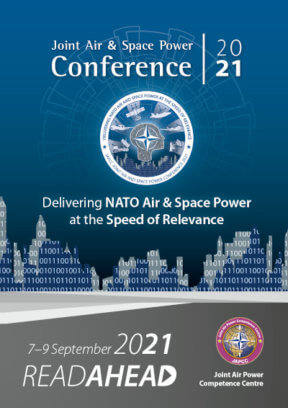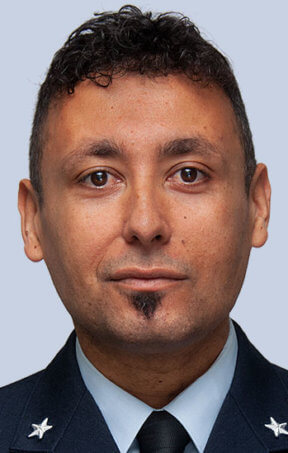Introduction
As the Alliance seeks to build resilience both within the individual nations and across the command structure, synchronizing the focus and efforts for collective defence requires open dialogue and consensus on how to proceed together. The ability of the Alliance to harmonize its efforts and minimize force capability deficiencies is vital. This ability includes exploring opportunities for joint education and training across disciplines and operational domains. It also necessitates the ability to integrate emerging technologies with existing capabilities, as well as anticipate the integration of future developments, to ensure maximum exploitation of the dynamic relationships across the force structure. The Alliance must also seek to stress the importance of information sharing, to include education across operational domains and inclusion into doctrine and strategy ways in which to adapt and merge new capabilities into current operations as they become available. Finally, the Alliance needs to harmonize policies, both of NATO and its member nations, to establish a common approach which will enable faster consensusbuilding and decisionmaking in times of crisis.
The Evolution of Strategic Concept
For the purposes of this paper, since the inception of NATO, there have been three periods during which NATO’s essential reasoning and strategic thinking has evolved:
- the Cold War;
- the immediate postCold War;
- the security environment since 9/11.
The Alliance’s first strategic concept stated that the primary function of NATO was to deter aggression and that NATO forces would only be engaged if this primary function failed, and an attack was launched. Complementarity capabilities between members and standardization across the Alliance were also key elements of this concept. Each member’s contribution to defence should be in proportion to its capacity – economic, industrial, geographical, military – and cooperative measures were put into place by NATO to ensure the optimal use of resources. Numerical inferiority in terms of military resources, visàvis the Soviet Union was emphasiszed. After 1991, a more extensive methodology was embraced where the ideas of participation and security supplemented the essential ideas of deterrence and defence.
From 1949 until the end of the Cold War, NATO published three Strategic Concepts, joined by new doctrine that distributed the measures by which the military was to actualise the Strategic Concept, entitled Strategic Guidance,1 ‘The Most Effective Pattern of NATO Military Strength for the Next Few Years’,2 and ‘Measures to Implement the Strategic Concept’.3
It can also be said that from 1949 to 1991, NATO’s strategy was largely characterized by defence and deterrence, although with growing attention to dialogue and détente for the last two decades of this period. International relations were dominated by bipolar confrontation and the focus was more on tension, than it was on dialogue and cooperation. In the postCold War time frame, a broader approach was adopted where the notions of cooperation and security complemented the basic concepts of deterrence and defence. For the Alliance, the period was characterized by dialogue and cooperation, as well as other new ways of contributing to peace and stability, such as multinational crisis management operations.
During this period, the three unclassified Strategic Concepts released by NATO were supplemented by characteristically military documents (MC Directive for Military Implementation of the Alliance’s Strategic Concept,4 MC Guidance for the Military Implementation of the Alliance Strategy,5 and MC Guidance for the Military Implementation of NATO’s Strategic Concept),6 which reflected the change of thinking and priorities for the Allies. These nonconfrontational documents were released to the public. While maintaining the security of its members was their fundamental purpose (i. e., collective defence), they sought to improve and expand security for Europe through partnership and cooperation with former adversaries. They also reflected a desire to reduce the number of nuclear forces to a minimum level, that which was only sufficient to preserve peace and stability. These documents stated that the Alliance’s fundamental tasks were security, consultation, and deterrence and defence, adding that crisis management and partnership were also essential to enhancing security and stability in the EuroAtlantic area.
In 1999, shortly after NATO’s 50year commemoration, Allied leaders adopted a new Strategic Concept that committed members to common defence, peace, and stability of the more extensive EuroAtlantic zone. It depended on a broad definition of security which recognized the importance of political, economic, social, and environmental factors in addition to the defence dimensions. It recognized the new dangers that had arisen since the end of the Cold War, which included: terrorism, ethnic conflict, human rights abuses, political instability, economic fragility, and the proliferation of nuclear, biological, and chemical weapons and their means of delivery.
The 9/11 terrorist attacks against the United States brought the danger of psychological warfare and weapons of mass destruction to the forefront. NATO needed to protect its populations both at home and abroad. Accordingly, NATO went through major internal changes to adjust military construction plans and training capacities to prepare individuals for new assignments.
Since the terrorist attacks of 9/11, NATO’s military thinking, assets, and energy have concentrated on the battle against terrorism and the prevention of the spread of weapons of mass destruction. NATO has deployed troops beyond the EuroAtlantic zone and grown to include 30 member nations. However, new dangers have arisen like energy security and cyberattacks. These were among the components that prompted Alliance experts to deliver another Strategic Concept in 2010.
NATO continues to develop and broaden its partnerships and quicken its pace of change to build new political connections and develop more solid operational capabilities to face an undeniably changing and more unstable world order.
With all this history in the back of our minds, it is necessary to proceed a step further with the biggest priority for NATO being to remain strong militarily and to become even stronger politically to take a more global approach. In November 2020, NATO leaders released an updated strategic concept entitled NATO 2030.
NATO 2030 is bringing together Allied parliamentarians, civil society, public and private sector experts, and youth to provide fresh thinking on how to make NATO an even stronger Alliance.
Additional Articles
This section presents five articles which will introduce various ideas and issues intended to inform the Harmonised Policy & Strategy Panel discussion, the ideas expressed in these articles are meant to inspire critical thinking and to prepare those attending the 2021 Joint Air & Space Power Conference:
- In Increasing NATO’s Resilience, Mr Omree Wechsler and Mr Doron Feldman address the problem of disinformation campaigns launched within NATO states,7 with the aim of undermining public support within the Alliance and provoking division among its member states. In their paper, the authors suggest a soft power approach to preserve the Alliance legitimacy and cohesion and to promote further cooperation with member and nonmember states.8
- The next paper, Looking for a Few Good Operators, by Dr Kyleanne Hunter, addresses the issue of Opportunities for Space Force to fulfil NATO’s Women, Peace, and Security Agenda.9 The unique nature of the Space domain, touching and enabling operations in every other domain, provides an opportunity to meaningfully enact gendered perspectives across all operations.
- The Impact of Law on NATO’s Space Power at the Speed of Relevance appears next in the book. Mr Álvaro Blanco, Col Dan Gallton, and Mr Dale Reding begin treating the interplay between concepts and constraints associated with the development of an overarching Space policy. The focus is on the extent of the collective selfdefence umbrella towards the Outer Space domain and concludes with several significant international legal concepts that will impact future NATO Space
- Ms Gentry Lane’s Avoiding Cyber Forever Wars focuses on how to disallow further adversary advancement in the Cyberspace domain and how essential it is for NATO partners to accelerate agreement on desired ends, cohesive strategies, and a quantifiable framework for assessing the progress of ways and means established to deter adversary cyber She advises that the force with the most effective use of cyber weapons, tactics, techniques, and procedures to achieve the desired ends, will be the victor, not intended as a Clausewitzian ideals of defeat or surrender, but in achieving strategic objectives.
- The final paper for this panel represents food for thought for novel Space security diplomacy. In Outer Space, a Challenging Domain for Ambitious Defence Strategy, Dr AnneSophie Martin explains how a variety of actors subsist in the most recently recognized operational domain10 and how they can be ‘intimidating’ by conducting acts of espionage or carrying out antisatellite tests. This leads to the use of satellites in order to conduct military operations as Space systems have become strategic targets that can be hacked or jammed to weaken an adversary.












